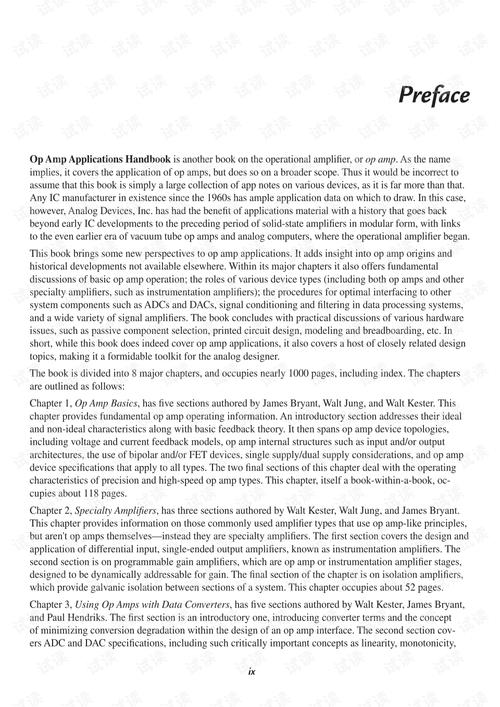
Limitations of Op Amp
Operational amplifiers, or op amps, are widely used in various electronic circuits due to their versatility and ease of use. However, like any electronic component, op amps have their limitations. In this article, we will delve into the various limitations of op amps from different perspectives, including their performance, stability, and practical applications.
Performance Limitations
One of the most significant limitations of op amps is their bandwidth. The bandwidth of an op amp refers to the range of frequencies over which it can accurately amplify a signal. While modern op amps have high bandwidths, they are still limited by their internal design and manufacturing processes. This limitation can be particularly problematic in applications that require high-frequency signal processing, such as audio and radio frequency circuits.

Another performance limitation is the input offset voltage. The input offset voltage is the voltage difference between the two input terminals of the op amp when the output is at zero. This voltage can cause inaccuracies in the circuit, especially when dealing with low-level signals. While many op amps have low input offset voltages, it is still a factor that needs to be considered in circuit design.
Additionally, op amps have limitations in terms of their power supply rejection ratio (PSRR). The PSRR is a measure of how well the op amp rejects noise and fluctuations in the power supply voltage. A low PSRR can lead to increased noise and instability in the circuit, which can be particularly problematic in sensitive applications.
Stability Limitations
Stability is another critical factor in op amp design. An unstable op amp can cause oscillations and instability in the circuit, which can lead to poor performance and even damage to the component. One of the main causes of instability is the gain bandwidth product (GBP), which is the product of the gain and bandwidth of the op amp. If the GBP is too high, the op amp may become unstable.
Another factor that can affect stability is the compensation network. The compensation network is used to stabilize the op amp by controlling its gain and phase margins. However, designing an effective compensation network can be challenging, and it requires a deep understanding of the op amp’s internal architecture.

Practical Application Limitations
In practical applications, op amps have several limitations that can affect their performance. One of the most common limitations is the power consumption. Op amps require a certain amount of power to operate, and this can be a significant concern in battery-powered applications or when designing circuits with high power requirements.
Another limitation is the output current capability. Op amps have a maximum output current that they can provide, and exceeding this limit can cause the op amp to enter into saturation or even damage the component. This limitation is particularly important in applications that require high output currents, such as driving speakers or relays.
Additionally, op amps have limitations in terms of their common-mode rejection ratio (CMRR). The CMRR is a measure of how well the op amp rejects common-mode signals, which are signals that are present at both input terminals. A low CMRR can lead to inaccuracies in the circuit, especially when dealing with signals that have a significant common-mode component.


